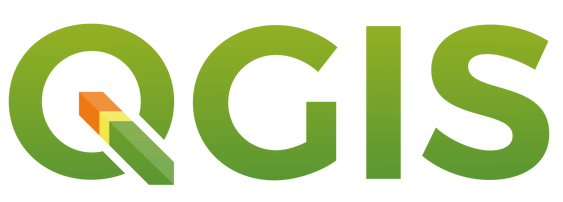Introduction to QGIS
- Authors: Alicia Ledo
- Lesson topic: This is a basic tutorial to introduce you to the QGIS software. It is oriented to people with no knowledge on the software. The tutorial covers: what is QGIS, QGIS interface, some basic tools and uses.

QGIS is a free and open-source cross-platform desktop geographic information system application that supports viewing, editing, and analysis of geospatial data. After the tutorial you will have a basic idea of how to use QGIS and about the potentiality of QGIS. It is a very basic tutorial, giving just the little nudge necessary to start using it (particularly for ArcGIS users!) The QGIS is a free, open source GIS software. Unfortunately, explaining what a GIS is won’t be covered in the tutorial (see below* for extra information). If you don’t know how to use ArcGIS, perfect! QGIS is easier to understand than the commercial option, since QGIS it far is more intuitive. If you do use ArcGIS, you may find QGIS estrange, at a first glance. But after, QGIS will be your friend. If you know how to use QGIS, this tutorial may be very basic, but you will be more than welcome! So we can start creating our Aberdeen QGIS community.
Below you will find more details on what a GIS is. To start the tutorial download the material for the examples. You will find all the data and the slides at this link. Once you’re there, click on the green Clone or download button. You can either clone the repository on your GitHub account (if you have one) or download as a zip file.
GIS in a nutshell:
Extracts spatial information from maps (i.e. if you can indicate your particular location (latitude and longitude) in a political globe map, the QGIS will tell you in which country you are. Doing the same in a precipitation map, you will know the annual rainfall you have)
Manipulate maps, geographic information, spatial geoprocessing (i.e. you can calculate the area occupied by rivers in the surface of the UK vs the area occupied by land) THE INTERESTING PART
You can create your own map (it does not mean you can create your own country!)
Extra details:
A geographic information system (GIS) is a system designed to capture, store, manipulate, analyse, manage, and present spatial or geographic data. The acronym GIS is sometimes used for geographic information science (GIScience) to refer to the academic discipline that studies geographic information systems and is a large domain within the broader academic discipline of geoinformatics. What goes beyond a GIS is a spatial data infrastructure, a concept that has no such restrictive boundaries. SOURCE: Wikipedia